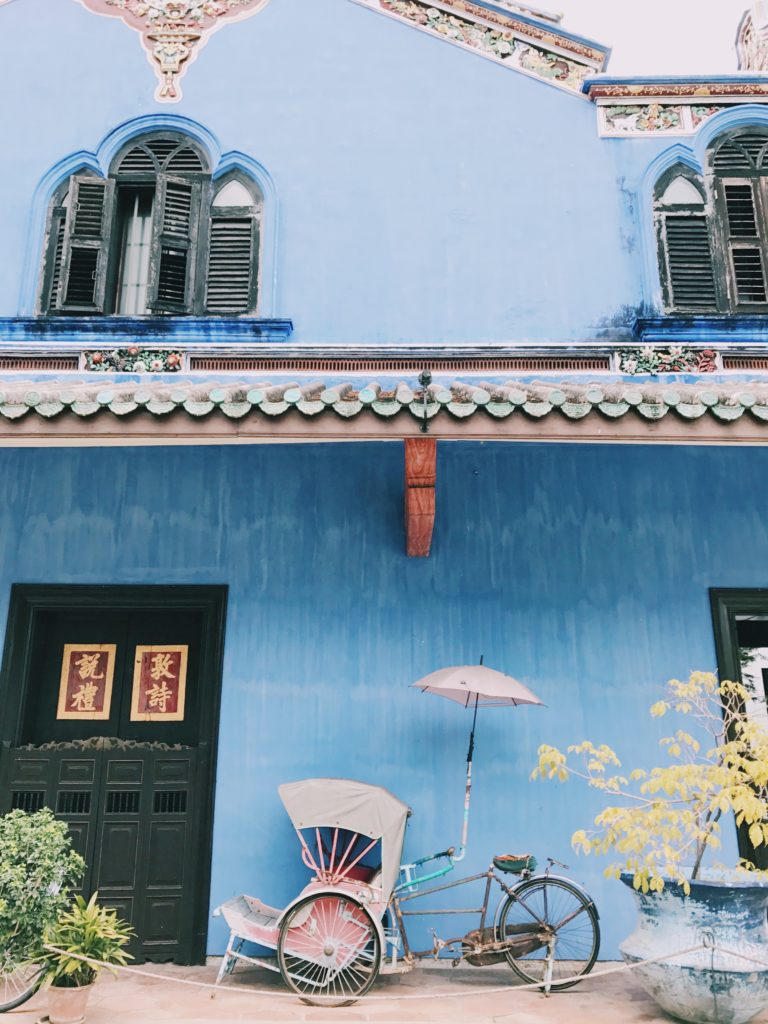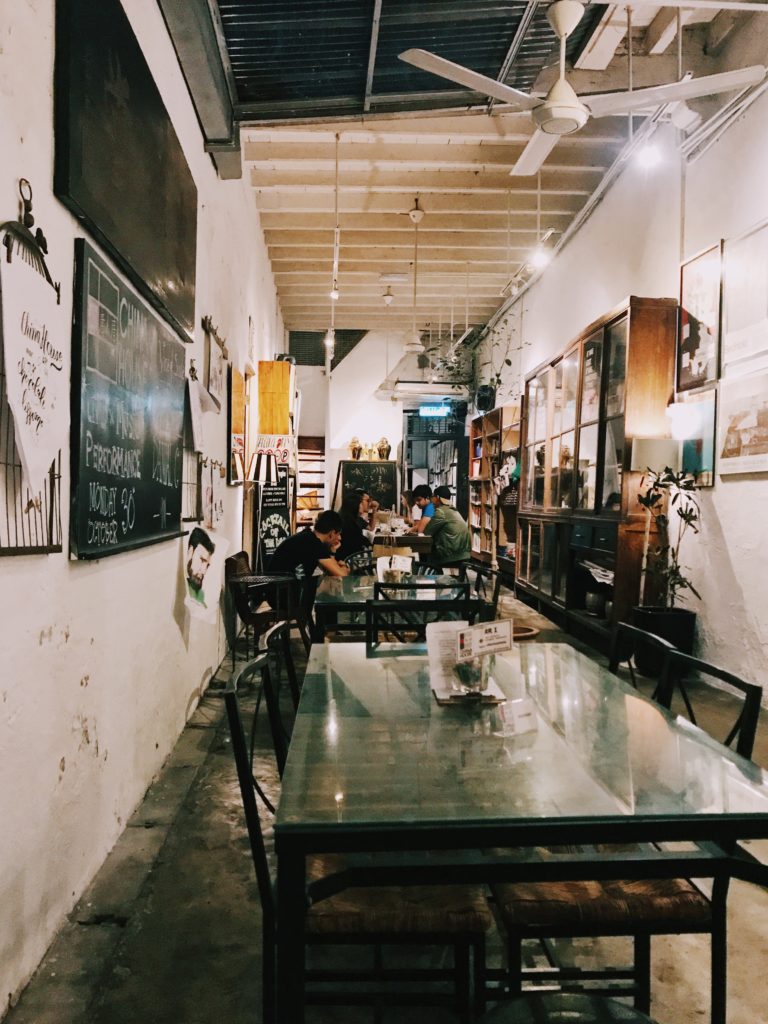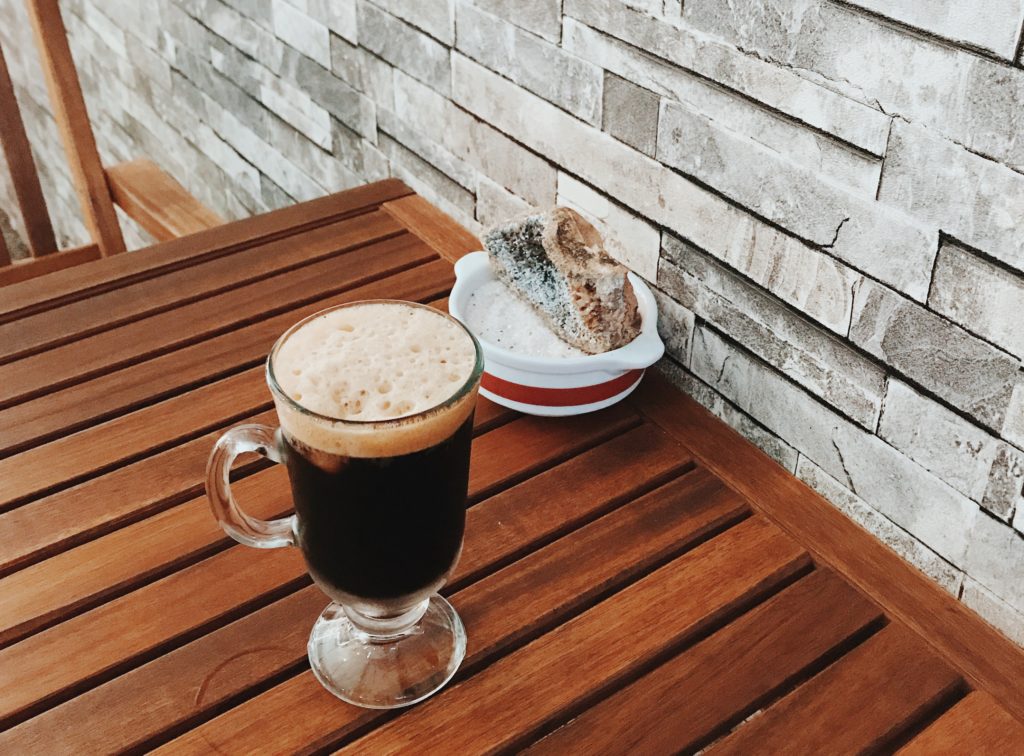Where to Eat in Penang, Malaysia for All Dining Styles
The little island of Penang on the northwest coast of Malaysia has so much to offer – rich history, Peranakan architecture, famous street art, and an entire charming beach town that is a designated UNESCO World Heritage site – but, what excited me most was its food culture. Penang, and, more specifically, the historic George Town area, is widely known as something of a foodie capital, with traditional street food, fine dining, cute cafes, and everything in between that will be sure to leave you five pounds heavier and 100 pounds happier. Here are my favorite places to eat in Penang for whatever dining style you’re craving: quick street food, a nice sit down meal, or just a coffee break.
Thanks to the global unifying powers of Instagram, I made friends with a young Penang local named Keith who was incredibly eager to help me organize my plans and guide me to the best sights during my trip to Malaysia in October. But when I asked him what I must do while in Penang, his response was quite simple: “the must is to try all our foods.”
Well, don’t have to tell me twice. I ate my way through that city and I have no doubt that you’ll also do the same when you visit. Hopefully this list will help you decide where to eat on your next trip to Penang.
Because the majority of Penang has some Chinese descent, you’ll find that much of the “local” food in the area is, in fact, Chinese. But Chinese-Malaysian food is actually quite distinct from Chinese food anywhere else in the world, and is a reflection of the ethnically diverse Penang culture. So don’t shy away from the Chinese food, or the Indian food, or the Japanese food, or really any of it, when visiting Penang – embrace it and eat everything and then come back later for more. It’s that good.
You’ll also find some cute little cafes and juice shops that embody the emerging “hipster” scene on the island, Malaysian street food that will cost you something like USD$3 and will be some of the best dishes you’ve ever eaten, and fine dining in beautifully decorated Peranakan mansions. It’s all worth a try when you visit, and honestly I think it would be tough to find a dud; but to get you started, here are some of my favorite spots to eat and drink in George Town, Penang.
Street Food
1) Roti Canai
You’ll have to take a taxi out to this little mobile street stall on Transfer road, but I promise it’ll be worth it. It crowds with people during the day, so your best bet is to head over in the morning for breakfast. Order the roti with egg (which is an egg encased and cooked inside deep fried doughy flatbread), and chicken with “spicy sauce” – whatever the heck that is. It may seem an odd choice for breakfast, but after eating it, I honestly wondered why we’ve adopted this cereal and scrambled egg nonsense over in the West . . . I’d much prefer fried dough and spicy mystery chicken.
To drink, order a glass of Malaysian tea, which is very similar to a milky, sweet Thai tea (yum!), and sit at the skinny little table along the side of the street to soak in your surroundings. It’s a charming kind of chaos, with traffic and motorcycles speeding by, the heat of the massive outdoor stove top and the smell of frying oil sending your senses into overdrive, and the loud chatter of the cooks and diners around you who are all in a rush to do something or be somewhere.
2) Penang Road Hawker Stall
This was one of the places Keith introduced to me that there’s no way I would have found without the direction of a local. One afternoon after he picked me up from my hotel, he drove us a bit out of George Town to an area filled with street markets and food carts and absent any tourists, ordered me things in a language I didn’t understand, and told me to eat. In following my general rule for foreign street food: don’t think, just eat; ask questions later. So I happily obliged, and Keith later explained what I was eating, and now I’ll share it with you so that you can order the exact same thing.
For lunch, order the char koay teow, a traditional dish of flat fried rice noodles with prawns and egg, which I scarfed down with my chopsticks a bit too quickly to be polite. For dessert, order chendol, which is made from the food cart down the street, and which was possibly the strangest dessert I’ve ever had. But, unsurprisingly, it was delicious – think green gelatinous noodles with red beans, swimming in an icy broth of sweet coconut milk. Take my advice – don’t think, just eat; ask questions later. You’ll be happy.
3) Pasar Air Itam Laksa
Assam Laksa is one of the most popular traditional Malaysian dishes, ranked 7th on CNN Travel’s World’s 50 Best Foods list. It is also perhaps one of the more jarring of foreign flavors, largely due to its strong flavors of shrimp paste and mackerel combined with a million other ingredients that seem out of place at first. Along with the seafood flavors, you’ll also get mouthfuls of cucumber, onion, pineapple, red chillies, ginger, mint, ginger, and thick rice noodles, creating a culinary melting pot of sweet, spicy, salty, and sour all in one bowl.
I recognize this dish might not be for everyone, considering it may be difficult to shake an aversion to salted mackerel no matter how many times you force yourself to eat it. But I still would highly recommend trying it, and if you hate it, it will only have set you back maybe $2 (or, you could even try ordering it without the fish).
This particular popular street cart is situated near the base of the Kek Lok Si Temple outside of George Town, amidst dozens of vendors selling their own steaming bowls of laksa despite how hot it is outside. To combat the heat, order a glass of sugar cane juice squeezed fresh from the cane right there in front of you, and grab a shaded seat if possible. Then absolutely let me know what you thought of your laksa and if you think CNN Travel is completely bonkers.
Seated Meals
1) Tek Sen
This was one of the first places that was recommended to me, at which I initially scoffed because it was Chinese and, hullo, I’m in Malaysia. But, as I explained above, Penang is mostly Chinese, so this really is typical “local” food, and good Lord is it good. Tek Sen has humble origins as a rice stall in 1965, and now is fairly popular among locals and tourists alike. My meal at Tek Sen was probably one of the best I’ve ever had, probably at least somewhat because it was all so different from anything I’ve ever eaten anywhere in the world.
It’s definitely not a “fine dining” establishment, but it is psuedo-indoors with fans and tables and chairs, and there is an actual printed menu (including English) which is rather expansive. I actually didn’t see a single other tourist when I was here, which in my opinion is an automatic stamp of approval for the authenticity of the food you’re getting. If possible, go with lots of friends so you can try more dishes, or do what I did and still order enough food for five and get laughed at by the wait staff (the food does come in different sizes, but a “small” dish is still a lot of food).
I ordered the stir fried eggplant with ground pork and salted fish, braised ginger duck, and assam tumis (a spicy and sour stew-like dish) with what I am only realizing much later was probably sting ray. If you’re overwhelmed at the menu options, order something close to this and you won’t regret it, plus maybe some of their homemade tofu and pork belly. The dishes are beautifully prepared and served in lovely clay pots and copper skillets and handmade ceramic bowls – details which reflect the thoughtfulness of the recipes prepared in this otherwise inconspicuous little restaurant.
2) Kebaya Restaurant
Although I only had the opportunity to eat breakfast here as a hotel guest, the steam buns I did eat and the sweet, spicy smells that wafted into my bedroom each night are solid indicators of a dinner worth eating. This entire heritage hotel, which used to be a private mansion, is impeccably designed with the traditional styles of architecture, colorful floor tiles, and wood carvings around the walls and doors, decorated with seemingly endless Peranakan antique details (also for purchase, with a hefty price tag).
The breakfast room is light and airy and luxurious, with big French doors opening to a little garden and courtyard on either side, combining a beachy colonial vibe with undeniably Peranakan décor. But when you go for dinner, you’ll be seated in an equally stunning room with a similar old-colonial-meets-Peranakan vibe, a live pianist, an ornate gold bar cart, and some pretty decadent meals.
3) Indigo
Disclaimer: I did not eat at Indigo, so I can’t personally vouch for its food. I just really wish I had eaten here. This pricey, Asian fusion restaurant is located in the famous Blue Mansion in George Town, another once-private-mansion-turned-heritage-hotel, with Peranakan décor similar to Seven Terraces. The entire Mansion is really stunning, colored in its iconic indigo paint, and the restaurant is no exception in its attention to aesthetic detail. With some pretty stellar reviews and delicious-looking menu items, it’s definitely a place worth visiting for dinner, and if I return to Penang, it will be first on my list.
Cafés
1) China House
Stretching between Beach Street and Victoria Street in George Town, this long, narrow café is a popular hang-out spot for both locals and travelers alike. There are a couple of sitting areas on the bottom floor of the café, bridged by an impressively long table covered in over 30 different homemade cakes and pies that all look equally delicious.
My recommendation is the salted caramel cheesecake, but one of my biggest regrets in all of 2017 was not boxing one or two other cakes to eat later, so you should probably do that. Order a pot of local tea and snag a seat at one of their cozy tables in the Canteen – it’s a great place to hide from a rainstorm, read a book, people watch, play games (they have a selection of board games available as well), or catch up with friends.
Upstairs you’ll find a small art gallery, anothing dining area, and a little shop filled with unique items made by local artisans – perfect for special gifts to bring home to friends who will be sad they couldn’t join you.
2) Kopi Loewak Cafe
Okay. I’m putting this here with a disclaimer: luwak coffee is very controversial. Not just because many people don’t like the idea of drinking a beverage made from the feces of a wild cat, but also because of the animal ethics issues surrounding the production of luwok coffee various parts of Asia.
But, like the controversy surrounding pâté, luwok coffee is considered a delicacy, and is one of the most expensive kinds of coffee produced anywhere in the world (in fact, I first learned about luwok coffee while visiting a coffee farm in Costa Rica). So do your research beforehand and make the decision for yourself whether you want to support the industry, and at the least make an effort to find wild civet coffee rather than caged.
Regardless of what you decide to do, Kopi Loewak café in George Town is a great place to go for a cup of coffee or espresso. The little shop has friendly service and a trendy, open feel, with minimal decor consisting of a selection of swoon-worthy coffee-making contraptions in copper and brass and wood, all of which you can purchase if somehow there’s room in your suitcase.
3) Ming Xiang Tai
This small, inconspicuous and Chinese pastry and tea shop might be a bit hard to find, as you won’t see any English on the front door. Keep an eye (and nose) out for these funky benches out front, lush green trees, traditional Chinese decor detailing the entry way, and the sweet smell of egg tarts baking inside.
Ming Xiang Tai sells bottled herbal Chinese teas, as well as a huge selection of impressive homemade pastries that get consistently rave reviews of bringing back “childhood memories” of traditional sweets. Grab a bottle of one of their traditional herbal tea recipes, and whatever you do, don’t leave without grabbing one of their famous Trishaw egg tart‘s to go – a melt-in-your-mouth, flaky bowl of pastry filled with thick, rich eggy custard. Eat and drink as you wander around George Town or quickly devour it in three bites on the bench outside (no surprise which one I did.)
Let’s Go.
I could have spent months eating my way through Penang, the charming little island foodie capital of Malaysia. Instead, I had just a few short to eat everything I could get my hands on that gave me some taste of the city’s ethnic and cultural diversity: Chinese duck, Malaysian street food, Japanese teas, Peranakan fine dining establishments, and funky cafes. Although I’ve listed some of my favorite food and beverage places that I ate at in Penang, there are endless others.
Any other dining recommendations for Penang, Malaysia? Let me know in the comments below!



















